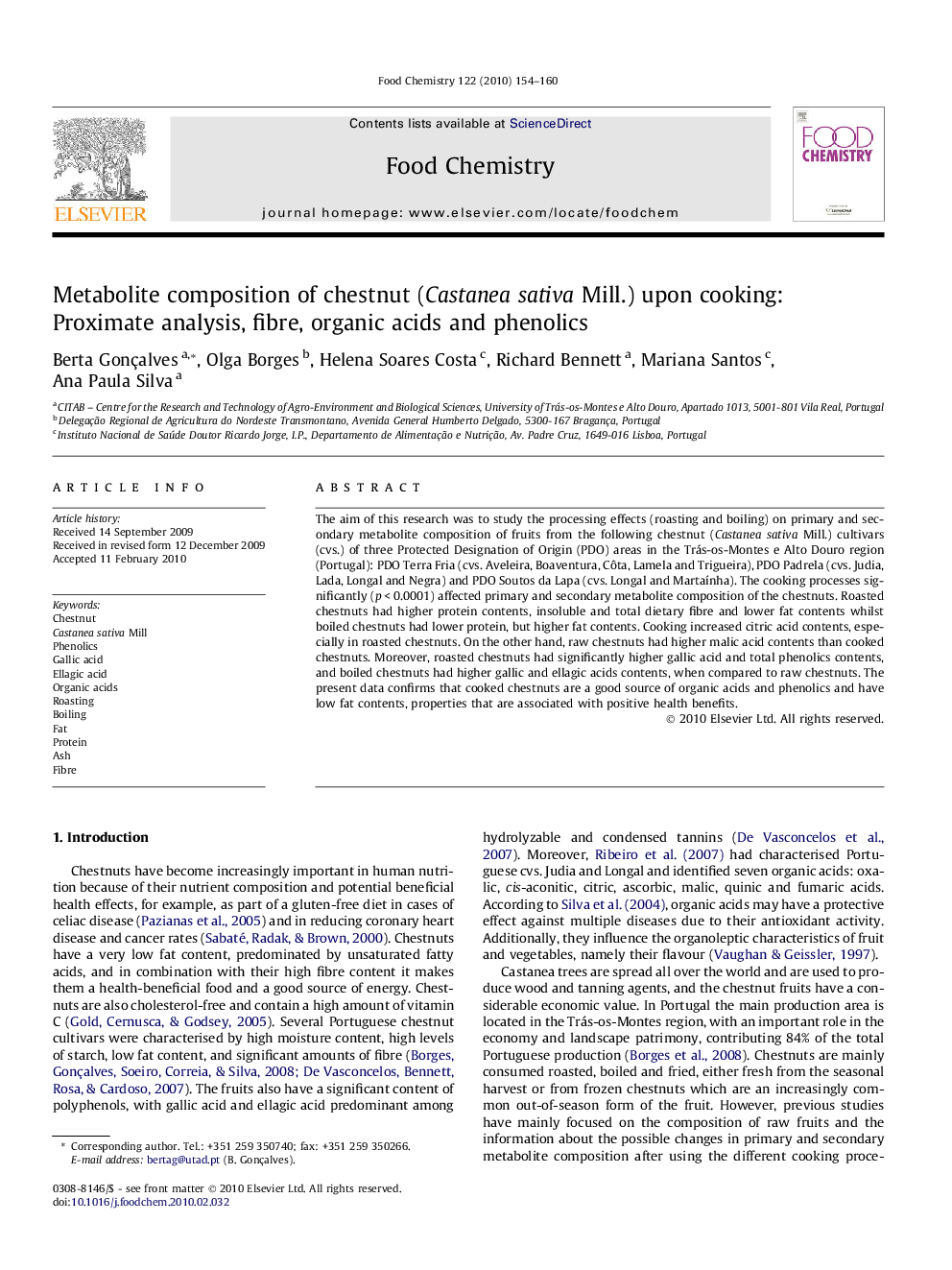| کد مقاله | کد نشریه | سال انتشار | مقاله انگلیسی | نسخه تمام متن |
|---|---|---|---|---|
| 1186169 | 963427 | 2010 | 7 صفحه PDF | دانلود رایگان |

The aim of this research was to study the processing effects (roasting and boiling) on primary and secondary metabolite composition of fruits from the following chestnut (Castanea sativa Mill.) cultivars (cvs.) of three Protected Designation of Origin (PDO) areas in the Trás-os-Montes e Alto Douro region (Portugal): PDO Terra Fria (cvs. Aveleira, Boaventura, Côta, Lamela and Trigueira), PDO Padrela (cvs. Judia, Lada, Longal and Negra) and PDO Soutos da Lapa (cvs. Longal and Martaínha). The cooking processes significantly (p < 0.0001) affected primary and secondary metabolite composition of the chestnuts. Roasted chestnuts had higher protein contents, insoluble and total dietary fibre and lower fat contents whilst boiled chestnuts had lower protein, but higher fat contents. Cooking increased citric acid contents, especially in roasted chestnuts. On the other hand, raw chestnuts had higher malic acid contents than cooked chestnuts. Moreover, roasted chestnuts had significantly higher gallic acid and total phenolics contents, and boiled chestnuts had higher gallic and ellagic acids contents, when compared to raw chestnuts. The present data confirms that cooked chestnuts are a good source of organic acids and phenolics and have low fat contents, properties that are associated with positive health benefits.
Journal: Food Chemistry - Volume 122, Issue 1, 1 September 2010, Pages 154–160